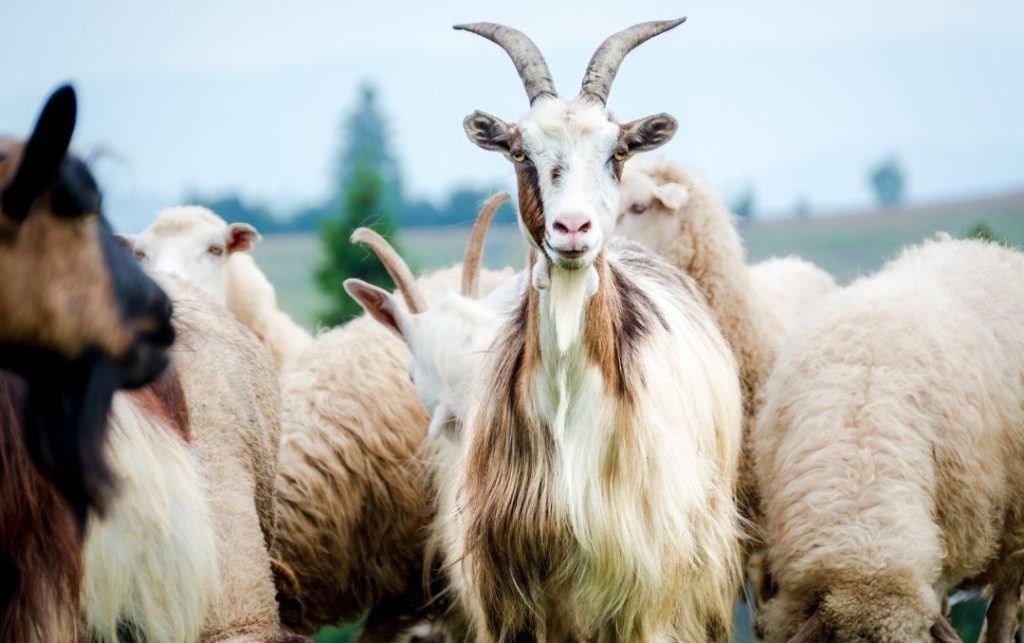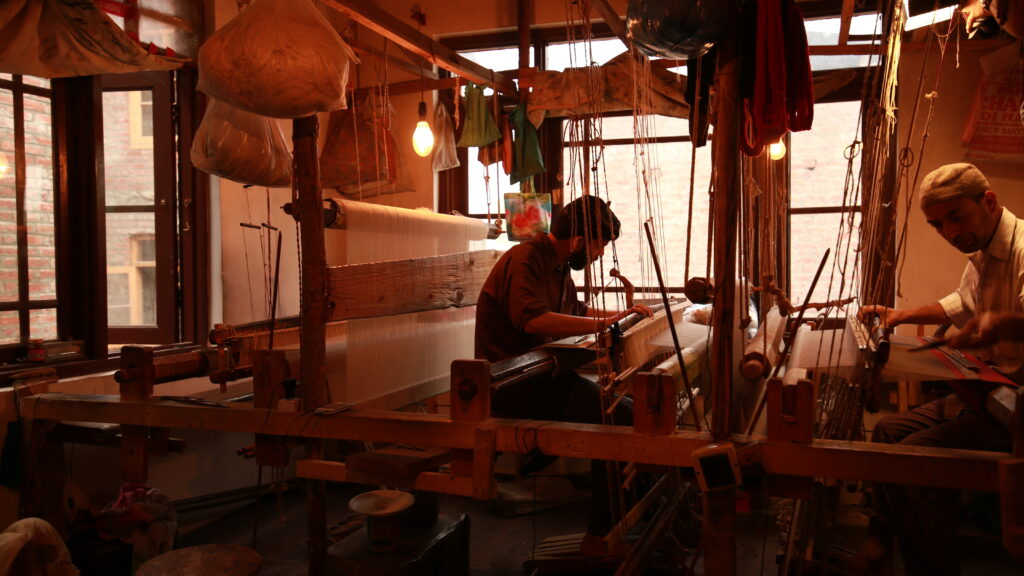Before we start discussing Pashmina and Cashmere, why not discuss the broader category from which both of them originate. Wool. Wool in garments has been used since 6000 BC. It was the Iranians who started to rear sheep to take advantage of their wool. Hence, wool started as a basic need, and today it is a fashion industry in which many people have the luxury to choose from hundreds of options in front of them.
Apart from stopping chilly winds to get to you, wool often gives a luxurious feeling especially those varieties which are acquired from rare and exotic animals. But you might be surprised to know that wool is different from hair, and the sweater, apparel, or wrap you are wearing might be made of either wool or hair!
Wool is sourced from sheep whereas hair is sourced from other animals like goats, alpaca, rabbits, etc. Wool is the outer fleece over the sheep's body, while hair can be the top fleece (guard hair) which protects the animal from rain etc, or the undercoat, which protects it from cold. Guard hair is coarser than the downhair. It is the undercoat that is soft, fine, smooth, warm, and highly prized. Wool fibres are short while hair fibres are longer.
Cashmere wool - Ladakh

Cashmere is one such down coat of the rare and exotic Ladakhi Capra Hircus goat. The goat is found 15000 feet above sea level in Ladakh's Changthang area. The region is cold and dry. Apart from this, it is home to a tribal group of nomads, who rear these goats for their wool, milk, and meat.
The goat grows a special kind of down coat in winters, and it protects it from one of the harshest winters ever (-40 degrees). The wool grows on the most sensitive parts of this goat, like the underbelly, ears, neck and so. As soon as summer arrives, the fleece makes the goat too hot and uneasy. This results in the goat rubbing itself against coarse surfaces to get rid of it. The rest of the wool is professionally combed off its body. It is collected and sent to Kashmir.
Cashmere in Kashmir
Cashmere wool was for the first time discovered by Shah I Hamdan. He was a Sufi saint who visited Kashmir, and traveled to Ladakh. There he found this luxury soft and warm wool, growing on the body of this goat. Thereafter, he ordered a pair of socks to be made out of it. This pair of socks was gifted to the then Mughal ruler of Kashmir - Zain ul Abideen - who was highly impressed by the quality and warmth of Cashmere. He immediately ordered processing units to be set, where this wool could be processed. The wool could be transformed into apparel, accessories, or anything that could be made out of it.
Shah I Hamdan had already brought along a group of craftsmen from Persia. They mastered several handicrafts like wool processing, Papier Mache, wool carving, copper work, and many more. It was them who now trained the locals to process Pashmina and make luxury shawls, scarves, apparel, and accessories out of it. Pashmina art was one which the maximum number of people chose as their source of income. Shawls began to be getting exported to India, as well as outside India. The economy improved, and so did the financial condition of locals.
Processing of Cashmere
Processing of raw Cashmere takes place in Kashmir. Wool is cleaned for several days and sorted according to quality. This is done by womenfolk. Clean wool is now spun, manually over a wooden spinning wheel, locally called 'Yinder'. Yinder converts a lump of wool into yarn, which is 12-16 microns in diameter. This fine thread is sent for weaving.

Weaving takes place over a wooden handloom. Fine Cashmere yarn is mounted over the loom, and two or three men work simultaneously. The yarn gets processed to a luxuriously gentle and downy smooth and soft fabric, and what comes to life is the world-famous Pashmina shawl.
Hence Pashmina is the royal art of handcrafting luxury shawls out of fine Cashmere wool. Pashmina is different and superior in quality from other kinds of wool/hair as it originates from a rare species of goats. The yarn is so fine that the diameter is between 12-16 microns only.
Also read: What is so special about cashmere?
Glory of Pashmina
The process of spinning and weaving is quite labour intensive. It takes as many as 50 different artisans to complete one Pashmina shawl. If the shawl is to be embroidered, it takes 4-5 years to complete each piece. Pashmina shawls were once only afforded by the royals, rich and influential personalities. Even today, Pashmina shawls are a major yes for celebrities around the world. It is the natural elegance, exquisite craftsmanship which goes into making it, sumptuous warmth, and coziness that makes Pashmina the king of all its counterparts.
Another difference between Cashmere and Pashmina is the usage of the two terms. Locally the shawls are called Pashmina shawl because the same term was used for the first time. 'Pashm' literally translates to 'soft gold'. It is a Persian word. However, when Europeans traveled to Kashmir, at the beginning of the 18th century, they discovered this luxury wool, which was called Pashm locally. They purchased a few hundreds of these but rather than calling these by their local name, they called the shawls Cashmere (which they would pronounce Kashmir as). With time, Cashmere became better known in Europe and even locally because Europeans were more in number and more influential than the locals
Also read: Kashmiri Shawls during the Dogra Period
Cashmere, Pashmina, and Responsible Fashion
Call it Cashmere, or Pashmina or simply Kashmiri shawls, the products are ethically handcrafted and hence their purchase would definitely be responsible shopping. Are Pashmina and Cashmere the same? Cashmere is the fibre that is manually acquired without hurting the animal. Later it is manually spun and manually woven by underprivileged sections of the society whose only source of income is Pashmina making and selling. There is no use of machines, which pollute the environment. In fact, if Pashmina is machine-made, it is considered fake.